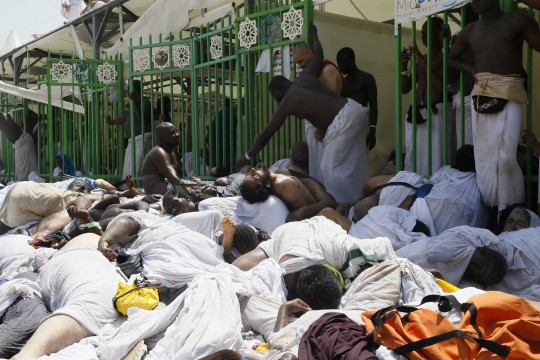On Thursday, more than 700 people were killed and 863 were injured in a stampede near Mecca, Saudi Arabia, with the death toll expected to rise. The Saudi civil defense directorate first reported on the accident on social media.
Thousands of rescue workers rushed to the scene where they rushed hundreds of people to four area hospitals.
The large death toll came just weeks after a crane crash at the Grand Mosque that killed 107 people and injured more than 200 people. The crane crash was blamed on high winds.
The stampede occurred during the hajj, or pilgrimage, of millions of Muslims to their holy city of Mecca. The deaths occurred at the town of Mina, six miles outside of the city. Mina has been the site of tragedy before. In 1990 over 1,000 pilgrims were killed in a stampede in a tunnel that connected Mina and Mecca and is considered to be the deadliest accident happen during hajj.
The deadly stampede continues to raise questions over the security and safety measures that started to be put in place over a decade ago.
The Saudi king has been in Mecca to over see the instillation of infrastructure that is meant to protect those who are making the sacred pilgrimage. Saudi authorities have taken steps to control the large crowds that have grown over the years. The Saudis have tried to install new forms of transportation, crowd control, and reducing the numbers of people making the pilgrimage.
Saudi civil defense directorate estimated that more than 2 million Muslims are expected to make the hajj pilgrimage this season. The AP reported that 100,000 security forces were deployed to oversee crowd management and ensure safety over the five-day pilgrimage.
Every able-bodied Muslim is obligated to make the hajj pilgrimage at least once.
